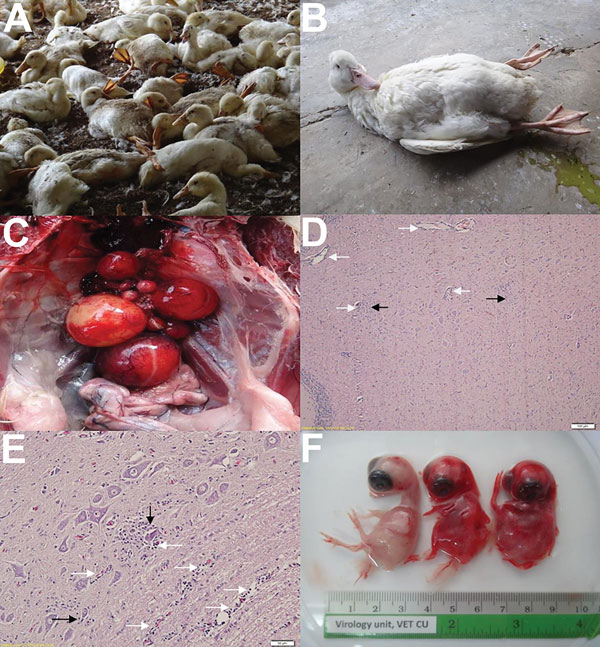Volume 21, Number 12—December 2015
Dispatch
Tembusu-Related Flavivirus in Ducks, Thailand
Figure 1

Figure 1. Clinical signs and pathologic lesions of duck Tembusu virus (DTMUV)–infected ducks, Thailand. A, B) Clinical signs; DMTUV-infected ducks showed neurologic signs, including inability to stand, ataxia, and paralysis. C) Gross lesion; severe hemorrhage and regression of ovarian follicles. D, E) Histopathologic lesion; moderate multifocal gliosis (black arrow) and perivascular cuffing (white arrow) in cerebellum (D) and spinal cord (E). Scale bars indicate 100 μm (D) and 50 μm (E). F) Chicken embryos infected with DTMUV strain DK/TH/CU-1. Normal embryo is shown at left; infected embryos at right died 3–5 days after inoculation, with severe cutaneous hemorrhage.
Page created: November 17, 2015
Page updated: November 17, 2015
Page reviewed: November 17, 2015
The conclusions, findings, and opinions expressed by authors contributing to this journal do not necessarily reflect the official position of the U.S. Department of Health and Human Services, the Public Health Service, the Centers for Disease Control and Prevention, or the authors' affiliated institutions. Use of trade names is for identification only and does not imply endorsement by any of the groups named above.